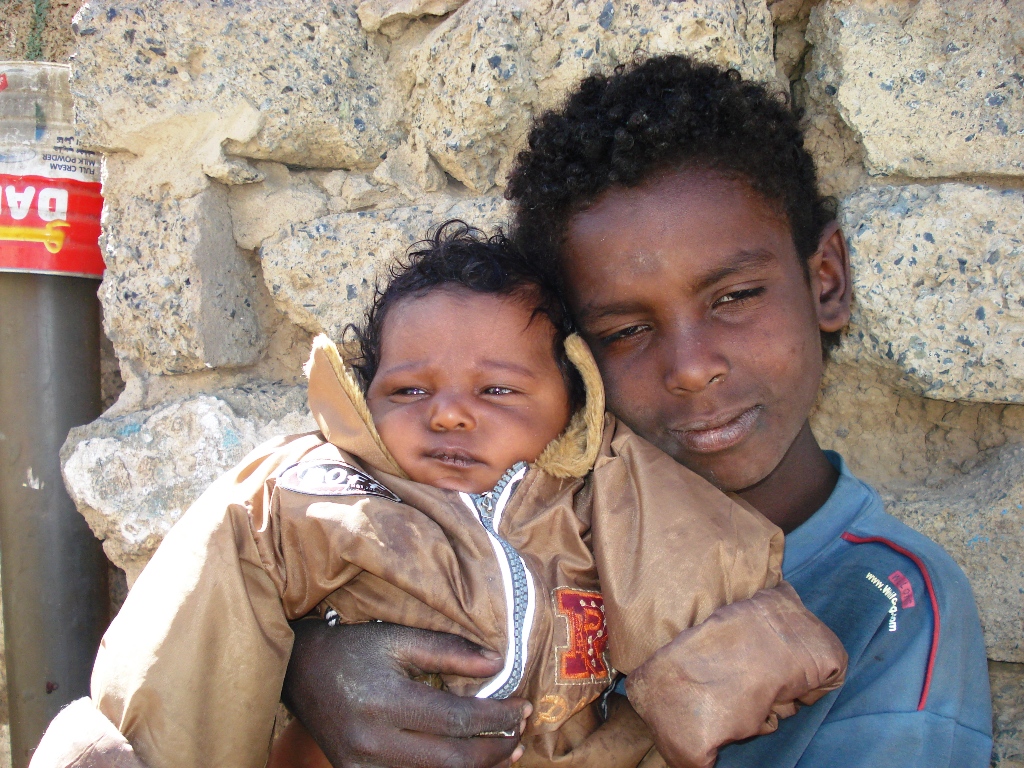A local non-governmental organisation (NGO) in Saada Governorate, northern Yemen, is assisting malnourished children under five and mothers displaced by fighting between government troops and Shia rebels.
The Charitable Social Society for Welfare (CSSW) has started a one-year project funded by the UN Children’s Fund (UNICEF) aimed at identifying and treating malnourished children under five, and educating mothers on the importance of breastfeeding and nutrition. The project targets 1,500 children and their mothers in three camps and elsewhere in Saada city, al-Dhaher, Sahar and al-Safra districts.
Mohammed Salem, manager of CSSW's office in Saada, told IRIN most of the displaced families were malnourished, and he warned that malnutrition indicators (wasting and underweight) will increase if they do not receive enough food assistance.
“Imagine when the displaced families came from their homes and farms to settle in tents. A tent is never like home," he said, adding that the food assistance they get is not sufficient.
Locals said that after the fighting between government forces and rebels, all markets in Saada, including several big ones, witnessed severe food shortages. Several farms were also destroyed during the fighting, adversely affecting the income of many families.
Saada Governonate is well-known for the cultivation of fruit (pomegranates, grapes, apples and oranges). The cultivation of `qat’, a mild narcotic, is also common, while grains are rarely planted. Wheat and sugar reach Saada mainly from other parts of the country.
The displaced families are getting food assistance, including wheat, rice, sugar and cooking oil, from international organisations such as the World Food Programme as well as from local NGOs, including CSSW.
Malnutrition survey
Isam Addin Awadh, who is in charge of the project, said the CSSW conducted a survey early this year among 1,029 under fives. "The survey found that the rate of severe malnutrition was 3.8 percent, while moderate malnutrition stood at 11.8 percent," he told IRIN.
He said the project conducts monthly repeat anthropometric surveys as the number of displaced families keeps changing. According to him, nine health workers and 57 volunteers have been trained on how to collect data and conduct surveys. There is no exact figure for the number of displaced families, but Salem said there were about 1,500 in the targeted areas.
Awadh said malnourished children were being sent for nourishment to the six malnutrition centres that have been set up in health facilities.
 Photo: United Nations  |
| A map of Yemen highlighting Saada province |
The project is being implemented in coordination with Saada Health Office, the Yemeni Red Crescent Association and the International Committee of the Red Cross. Officials at Saada Health Office were unwilling to comment when contacted by IRIN.
A Qatari brokered peace agreement signed in February ended the armed conflict that broke out in 2004 between government forces and Shia rebels in the Saada region. Thousands of families were displaced after their homes were destroyed during the fighting. But the government has not yet started reconstructing the war-affected areas. The UN Refugee Agency (UNHCR) office in Yemen is working to provide 400 housing units for 400 families (around 2,800 persons).
maj/ar/cb
This article was produced by IRIN News while it was part of the United Nations Office for the Coordination of Humanitarian Affairs. Please send queries on copyright or liability to the UN. For more information: https://shop.un.org/rights-permissions





